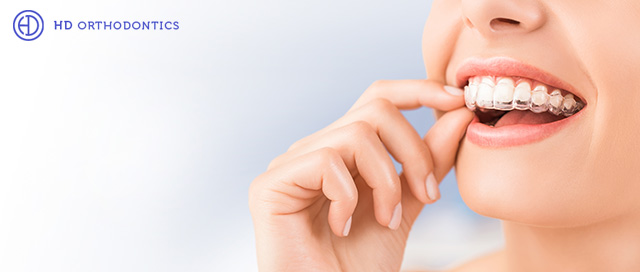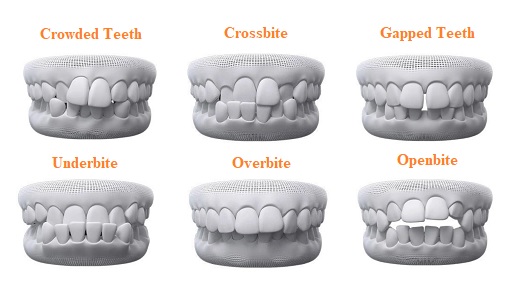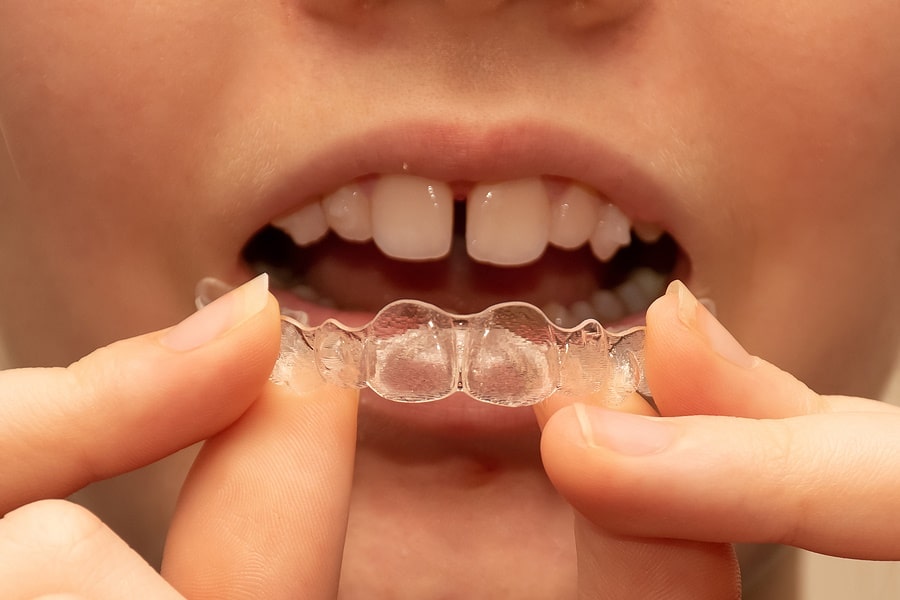Success Stories: How Invisalign Changed Lives and Increased Confidence
Success Stories: How Invisalign Changed Lives and Increased Confidence
Blog Article
Invisalign vs. Traditional Dental braces: Which Option Is Right for You?
When thinking about orthodontic treatment, the selection between Invisalign and standard braces offers numerous essential elements that merit mindful examination. Invisalign provides a discreet choice with removable aligners, while traditional dental braces supply an extra visible yet efficient option for serious imbalance.
Summary of Therapy Options

In comparison, traditional dental braces contain metal braces and cords that are bonded to the teeth. This method uses continuous stress over time to accomplish alignment. While efficient for intricate orthodontic issues, typical dental braces need routine check outs for modifications and can position challenges in preserving dental hygiene as a result of the trouble of cleansing about cords and brackets.
Both choices have their qualities, and the option often rests on certain oral conditions, way of living preferences, and patient conformity. Inevitably, speaking with an orthodontic expert is important for figuring out the most appropriate therapy plan tailored to individual requirements. Comprehending the nuances of each option can substantially influence the total success of orthodontic therapy.
Aesthetic Considerations
A significant variable affecting the selection in between Invisalign and typical braces is the visual allure each treatment offers. Invisalign aligners are crafted from clear plastic, making them basically unseen when used. This very discreet look is particularly attracting teenagers and adults that may feel uncomfortable regarding their orthodontic therapy. The capacity to maintain an all-natural smile throughout the placement process can significantly enhance the individual's confidence in social and professional settings.
In contrast, typical dental braces are composed of steel brackets and wires, which can be much more obvious. While developments in orthodontic technology have actually resulted in the advancement of smaller braces and colored elastics, traditional braces still maintain a more noticeable account. For some individuals, the exposure of dental braces might hinder them from seeking needed therapy.
Eventually, the option between Invisalign and traditional dental braces may depend upon personal preferences regarding aesthetic appeals. People that focus on discernment commonly favor Invisalign, while those who are much less concerned concerning visibility might opt for conventional dental braces. Recognizing the aesthetic ramifications of each option is critical for making an informed decision that aligns with one's way of life and choices.
Convenience and Convenience

In regards to comfort, Invisalign aligners are detachable, allowing clients to appreciate their favored foods without limitation and keep ideal oral health. Brushing and flossing are simplified, as the aligners can be secured throughout these regimens, whereas traditional dental braces need cautious navigating around brackets and cords.
In contrast, traditional dental braces necessitate regular adjustments, making them much less hassle-free for those with busy timetables. In look at this now general, the comfort and ease of Invisalign make it an attractive choice for lots of individuals looking for orthodontic therapy.
Treatment Duration and Effectiveness
While both Invisalign and typical dental braces work in dealing with oral imbalances, the duration of therapy can vary considerably between the two options. Usually, Invisalign therapy can take anywhere from 12 to 18 months, relying on the intricacy of the situation. The clear aligners work by gradually moving teeth right into their preferred positions, and regular follow-ups with an orthodontist assistance make sure development stays on course.
On the other hand, typical dental braces often require a longer commitment, typically ranging from 18 months to 3 years. This results from their fixed nature browse around this site and making use of cords and braces, which can be more efficient for extreme misalignments and intricate cases (Invisalign). The therapy effectiveness of typical dental braces is well-documented, as they permit exact adjustments and better control over tooth movement
Eventually, the selection in between Invisalign and traditional braces may hinge on both the awaited treatment period and the certain oral issues handy. Consulting with an orthodontist is vital, as they can give tailored recommendations based upon private demands, ensuring the selected technique aligns with preferred outcomes and timeframes.
Price Contrast and Insurance Options
Cost plays a considerable function in the decision-making procedure for individuals thinking about orthodontic treatment, whether going with Invisalign or traditional dental braces. On standard, the price of Invisalign arrays from $3,000 to $8,000, while typical braces normally set you back in between $2,000 and $6,000. Variables affecting these costs consist of the intricacy of the case, the duration of great site therapy, and geographical location.
Insurance coverage can considerably affect out-of-pocket costs. Lots of dental insurance coverage plans provide partial protection for orthodontic treatments, but the specifics can differ commonly. It is crucial for individuals to evaluate their insurance plan to figure out the level of protection for either alternative. Usually, typical dental braces may be a lot more frequently covered by insurance coverage strategies contrasted to Invisalign, which some insurance providers classify as a cosmetic treatment.
Furthermore, a number of orthodontic methods use adaptable repayment plans, making both therapy options extra accessible. Individuals need to inquire regarding potential financing options and discount rates for upfront payments. Examining the complete expense, including insurance policy advantages and settlement plans, is vital for making an educated choice that lines up with both visual choices and budget considerations.

Final Thought
In summary, the choice between Invisalign and traditional dental braces hinges on several factors, including aesthetic preferences, convenience, treatment period, and price. Invisalign uses a very discreet, removable alternative that helps with oral health and dietary versatility, while traditional dental braces may be better for complex dental problems and usually come with a reduced price point. Eventually, examination with an orthodontist is important to analyze specific conditions and establish one of the most ideal treatment option for attaining ideal dental placement.
When taking into consideration orthodontic treatment, the option in between Invisalign and standard dental braces provides several crucial aspects that warrant cautious assessment.Contrasting Invisalign and traditional dental braces exposes distinct therapy alternatives for orthodontic modification.While both Invisalign and traditional braces are reliable in dealing with dental imbalances, the duration of therapy can differ considerably between the 2 options.Cost plays a significant duty in the decision-making process for individuals thinking about orthodontic therapy, whether deciding for Invisalign or traditional dental braces.In summary, the selection between Invisalign and typical braces hinges on multiple factors, including aesthetic choices, comfort, treatment duration, and cost.
Report this page